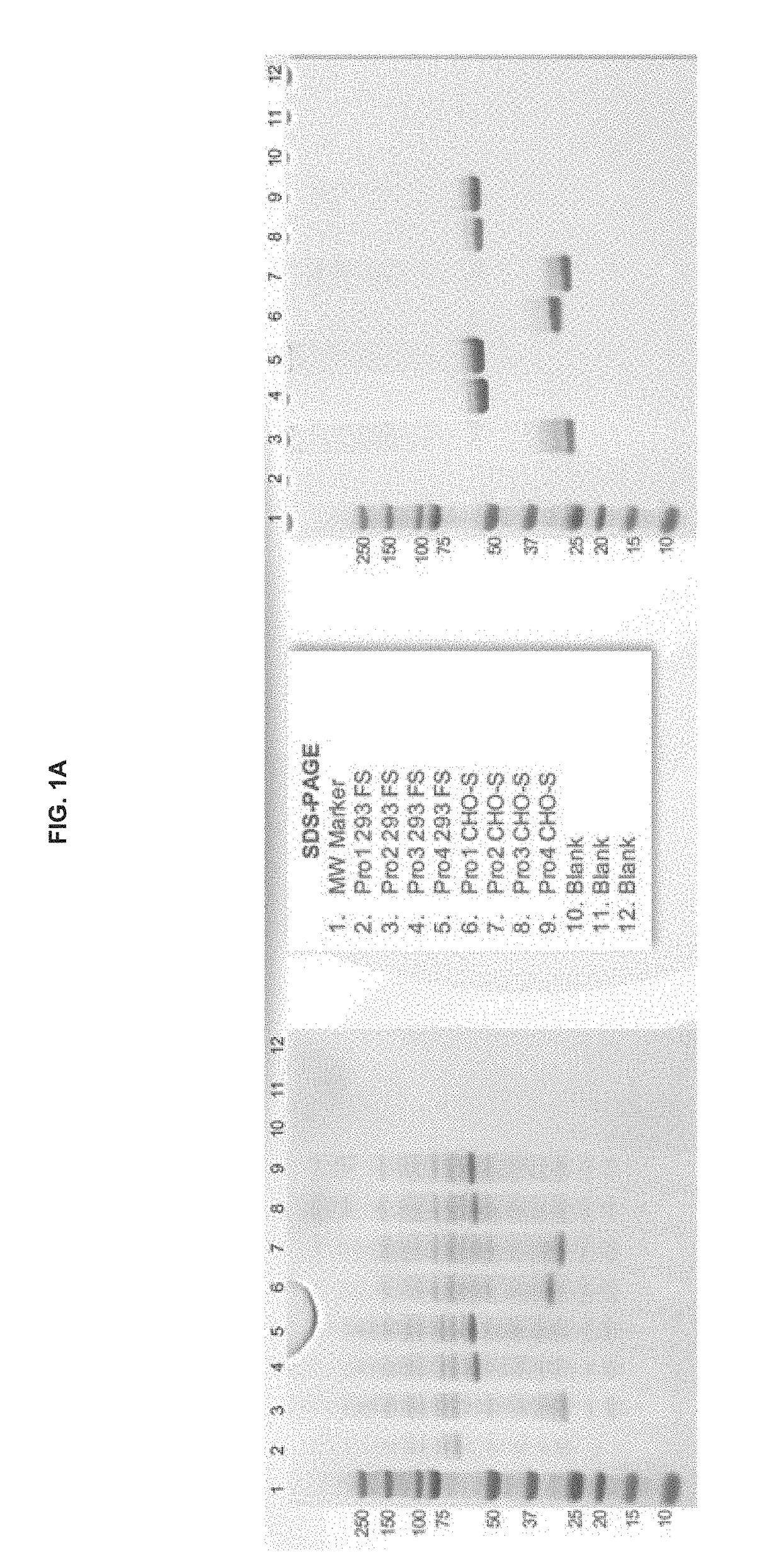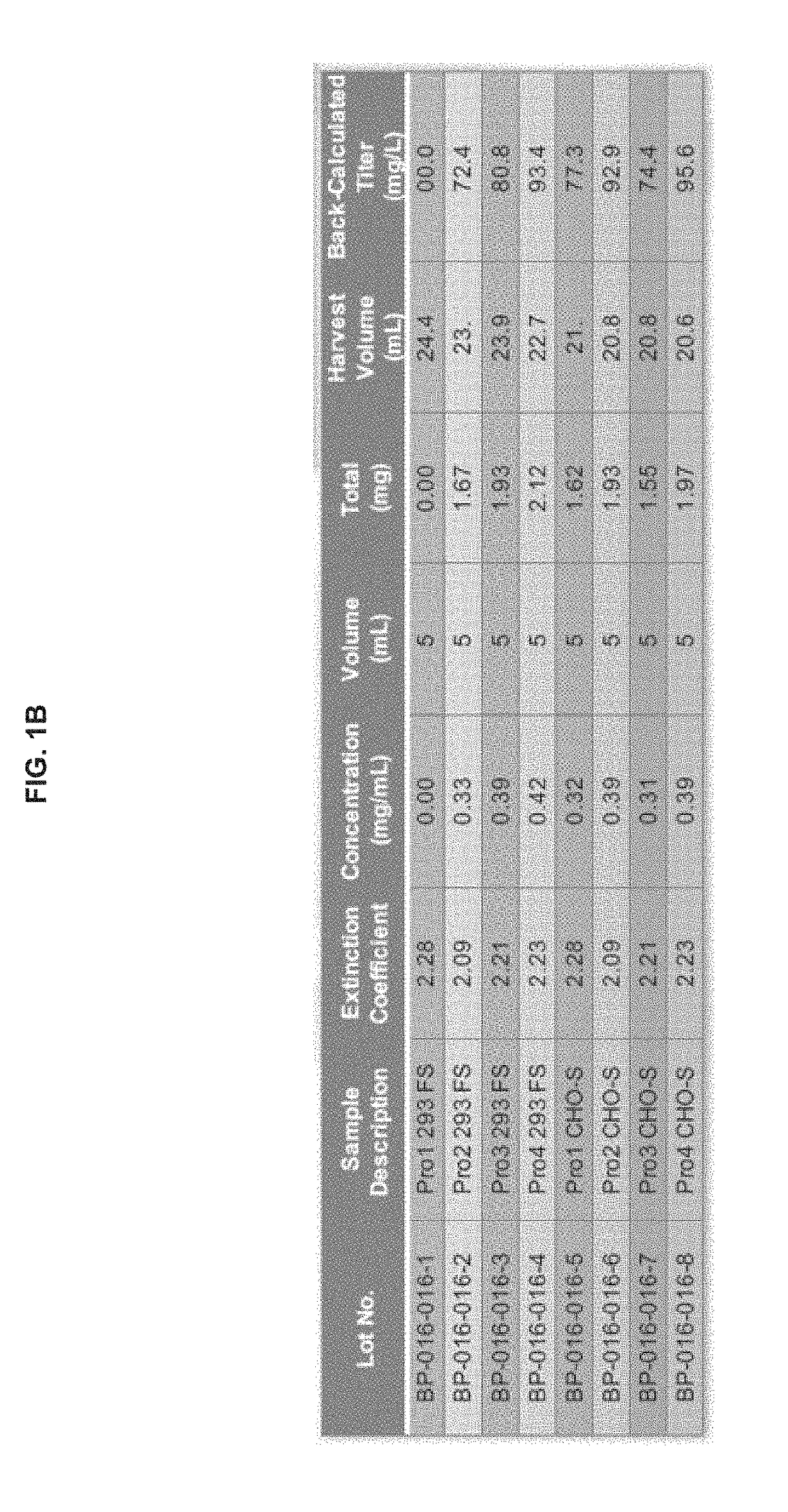Inducible binding proteins and methods of use
- Summary
- Abstract
- Description
- Claims
- Application Information
AI Technical Summary
Benefits of technology
Problems solved by technology
Method used
Image
Examples
example 1
Preparation and Characterization of Initial PRO Platform
[0350]The purpose of this investigation was to develop a “conditionally active” T cell engager where T cell activation and cytotoxicity are enhanced in the tumor microenvironment. The strategy: was to insert tumor-specific protease cleavage sites into proprietary αX / αCD3 molecules so that cleavage and tumor binding results in an active molecule. αX is binding domain for 1 or preferably 2 tumor antigens. The molecular design utilizes protease cleavage sites located in the scFv linkers of a pair of inactive anti-CD3 scFvs that contain complementary active anti-CD3 domains (VH and VL). in principle, following binding of the two anti-tumor binding domains to the surface of the tumor cell, the two linked, functional anti-CD3 binding domains can associate to generate an active CD3 binding domain and initiate T-cell mediated killing of the tumor cell.
[0351]Platform 1 (Unpaired αCD3 scFvs)[0352]Pro1—αEGFR G8 sdAb—I2C VH—His10[0353]Pro2...
example 2
Preparation and Characterization of Second Generation PRO Platform
[0361]The second generation PRO platform polypeptides were designed to have a VL or VH domain with is rendered inactive (i.e., essentially no CD3 binding) by varying the polypeptide sequence of this VL or VH domain. Exemplary second generation Pro polypeptides are set forth below.
[0362]Platform 2 (Inactivated αCD3 scFvs)[0363]Pro5—αEGFR G8 sdAb—I2C VH—Flag—I2CVLi—Flag—I2CVHi—Flag—I2CVL—αEGFR D12 sdAb—His6[0364]Pro6—αEGFR G8 sdAb—I2C VH—Flag—I2 CVLi—His6[0365]Pro7—I2CVHi—Flag—I2CVL—αEGFR D12 sdAb—His6[0366]Pro8—αEGFR G8 sdAb—I2C VH—Flag—I2CVL—His6
[0367]The structure of Pro 5 is shown in FIG. 3. It was expected for Pro 5 that uncleaved polypeptides would bind EGFR well, would not bind to CD3 and would not be active in a T-cell dependent cytotoxicity (TDCC) assay. Post cleavage, it was expected that both halves of an active anti-CD-3 scFv would be tethered to a cancer cell via binding to EGFR. The two active scFv domains...
example 3
Evaluation of Binding Dependence on Multiple Target Binding Domains
[0384]An experiment was designed to assess the importance of more than one target binding domain on the constructs ability to bind to CD3. Pro25-27 were designed with no EGFR target binding domains, these domains being replaced by green fluorescent protein (GFP) binding domains. FIG. 20. Part of the motivation for using anti-GFP binding domains was that GFP is not expressed on the surface of OvCar8 cells. The anti-GFP-containing PRO constructs were combined with Pro6 and Pro7 and subjected to protease cleavage with EK. As shown in FIG. 21C (Pro6+Pro26), FIG. 21D (Pro6+Pro27), FIG. 21E (FIG. 7+25) and FIG. 21F (Pro9+25), there is essentially no binding of CD3 by these constructs following EK cleavage. Thus, it is necessary for each Pro component to include at least one target binding domain for the cleaved construct to bind and form an active CD3 binding domain.
PUM
| Property | Measurement | Unit |
|---|---|---|
| Electric charge | aaaaa | aaaaa |
Abstract
Description
Claims
Application Information
 Login to View More
Login to View More - R&D
- Intellectual Property
- Life Sciences
- Materials
- Tech Scout
- Unparalleled Data Quality
- Higher Quality Content
- 60% Fewer Hallucinations
Browse by: Latest US Patents, China's latest patents, Technical Efficacy Thesaurus, Application Domain, Technology Topic, Popular Technical Reports.
© 2025 PatSnap. All rights reserved.Legal|Privacy policy|Modern Slavery Act Transparency Statement|Sitemap|About US| Contact US: help@patsnap.com



